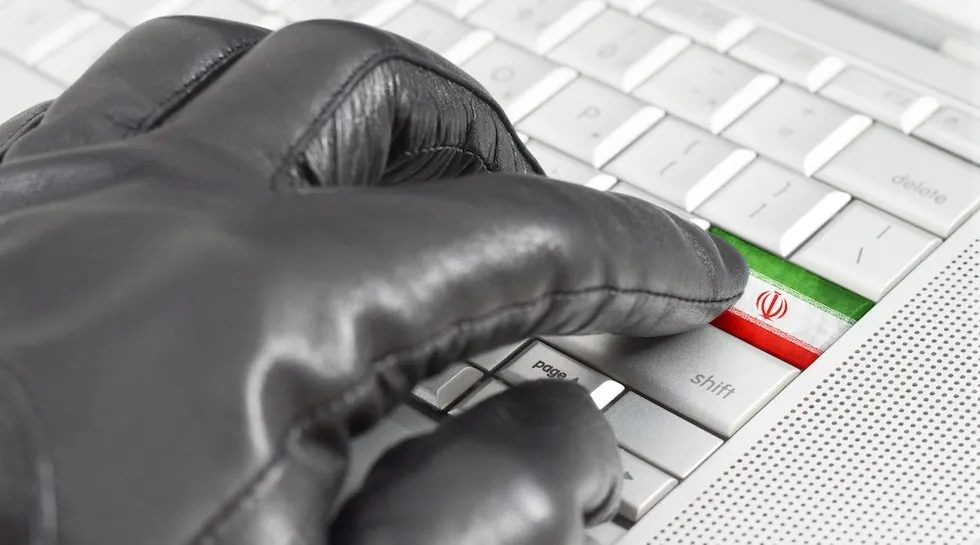The footage was unmistakable: plumes of smoke rising over Iran’s nuclear sites, a fiery punctuation mark on years of brinkmanship and intelligence coups. With one sweeping air campaign, the United States delivered a message: The Islamic Republic won’t cross the nuclear threshold.
But anyone assuming the threat has been neutralized is mistaken. Iran’s nuclear humiliation may hasten a shift already under way — from building bombs to waging war through digital disruption.
Cyber warfare offers something the mullahs crave: the ability to humiliate, disrupt, and retaliate without risking direct military confrontation.
Even as diplomats celebrate a ceasefire, cybersecurity experts remain on alert. In 2025, a regime doesn’t need enriched uranium to paralyze an enemy. It needs a cadre of skilled hackers, access to stolen exploits, and no scruples about targeting civilian infrastructure.
Iran’s cyber playbook didn’t appear overnight. In 2012, the Shamoon virus devastated Saudi Aramco’s systems, wiping tens of thousands of computers. Since then, Tehran has steadily advanced its cyber operations.
Today, Iran commands a capable and motivated digital force. With its nuclear facilities in ruins, the regime has every reason to flex other muscles. Cyber warfare offers something the mullahs crave: the ability to humiliate, disrupt, and retaliate without risking direct military confrontation.
They’re not the first to embrace this model.
Russia, long dominant in the cyber realm, has hammered Ukraine with digital attacks targeting power grids, satellites, and financial systems. Criminal groups like Conti and Black Basta operate under Moscow’s protection, extorting ransoms and leaking stolen data to sow chaos.
This blending of espionage, sabotage, and state-backed crime has become a blueprint for autocracies under pressure. Iran, hemmed in by sanctions and unrest, doesn’t need to invent the model. It just needs to adopt it.
Most Americans still think of cyberwar as an abstract threat — something IT departments handle behind the scenes. That complacency works to our enemies’ advantage.
Take zero-day vulnerabilities: flaws in software even the developers don’t yet know exist. They’re sold on dark markets for eye-watering sums and let hostile actors bypass traditional defenses undetected.
Then there’s Chaos RAT, a remote access trojan capable of burrowing into a network and sitting dormant for months. Once triggered, it can steal sensitive data, erase backups, or crash entire systems on command.
Iran possesses both the motive and the skill to deploy these weapons — and the timing couldn’t be better for the regime. With its nuclear program crippled, it needs a new front to demonstrate relevance.
RELATED: Google confirms Iranian hacking group targeted Trump, Harris presidential campaigns
 daoleduc via iStock/Getty Images
daoleduc via iStock/Getty Images
China’s cyber militias show what’s possible. Groups like APT Silver Fox specialize in patient infiltration, building access over years. Iran lacks Beijing’s global reach, but the methods are accessible. Tehran’s hackers borrow code from Russia, shop the same black markets, and lease infrastructure from the same digital underworld.
The global cyber arena now functions like a black-market bazaar: fluid alliances, shared tradecraft, and few rules. Almost everything’s for sale.
So while headlines tout the ceasefire between Israel and Iran, they miss the next act. No truce binds a nation’s hackers. Cyber operations offer deniability by design. When a hospital network locks up or a power grid fails, Tehran’s response will be predictable: denial, distraction, and a smirk about the West’s poor “cyber hygiene.”
Expect Iran to probe how far it can push in cyberspace without drawing more missiles in return. And unless the West prepares accordingly, those probes may succeed.
America still leads the world in conventional firepower. But cyber defense remains its soft underbelly. Agencies like the Cybersecurity and Infrastructure Security Agency have made strides, but critical infrastructure — power plants, water systems, hospitals — still run on aging software and patchwork security.
Iran doesn’t need to destroy a city to spread fear. A flip of a switch in a power station or the theft of sensitive government files can inflict lasting damage — and create leverage.
This imbalance between battlefield dominance and digital vulnerability demands urgent correction.
Cybersecurity must move from an IT line item to a strategic national priority. That means building AI-driven detection systems, developing real deterrence for cyberattacks, and forging public-private partnerships to defend vital infrastructure.
Iran’s nuclear setback matters. But no bomb erases a hacker’s know-how. No missile strike disables an ideology that thrives on asymmetrical warfare.
The coming months will test whether the West has learned anything. Tehran’s leaders need to prove they still have teeth. While their nuclear ambitions smolder, their cyber arsenal remains sharp — and likely emboldened.
The next war may not begin with jets roaring over deserts. It may start silently in the fluorescent-lit halls of a data center, where intruders already hide behind blinking servers, waiting.
In that theater, the rules are different — and the consequences no less severe.
Click this link for the original source of this article.
Author: Julio Rivera
This content is courtesy of, and owned and copyrighted by, http://theblaze.com and its author. This content is made available by use of the public RSS feed offered by the host site and is used for educational purposes only. If you are the author or represent the host site and would like this content removed now and in the future, please contact USSANews.com using the email address in the Contact page found in the website menu.







